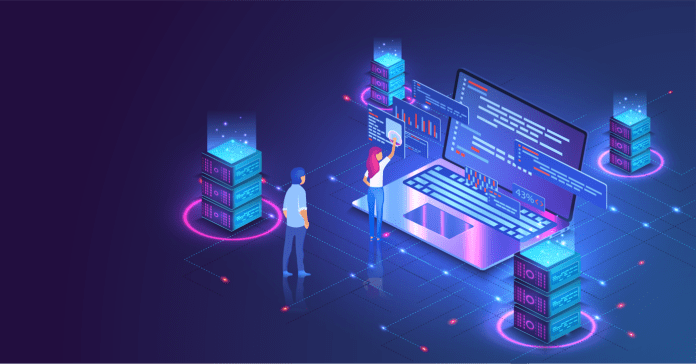Data center infrastructure encompasses a vast array of equipment. This includes servers, storage, networking, applications, and the cloud.
But it also stretches into the realms of facility infrastructure components, such as power distribution units (PDUs), computer room air conditioners (CRACs), and building management systems (BMS).
It makes sense, therefore, that software would evolve to do the job of efficiently managing and centralizing the management. It is known as data center infrastructure management (DCIM).
DCIM systems help to ensure the high availability of the data center, that they operate with energy efficiency, properly use capacity, and assist in the prediction of future needs within the constraints of the budget.
Instead of isolated teams managing IT and others managing building facility systems, such as heating, cooling, and humidity control, DCIM has emerged to bring everything under one umbrella. They haven’t arrived there yet, but major progress has been made.
See below some of the top trends in the data center infrastructure management market:
1. Convergence of IT and OT
IT used to be completely separate from operational technology (OT).
The IT team dealt with computers, networking, storage, and software. The OT team handled cooling, heating, humification, electrical, various building systems, and much more.
They typically didn’t collaborate well, as each had different sets of protocols, languages, needs, and priorities – the building team might not want more servers, as that would mean having to overhaul the entire power distribution set up.
And on the other side of the coin, the IT team wouldn’t like being told that they couldn’t increase rack density, as the cooling systems couldn’t provide sufficient capacity. But Gartner says these worlds are coming together inevitably as digitalization takes hold.
2. Cloud-based DCIM
On-premises DCIM has been the norm for some time. But now the worlds of the data center and the cloud are inextricably linked.
Every data center has passed many workloads and functions to the cloud. The data center retains core functions or data and systems that must remain in house due to security or compliance reasons. Much of the rest is sent to the cloud. Hence DCIM systems have been forced to take this factor into account. And that’s why more cloud-based DCIM systems are appearing.
“While on-premise data center infrastructure management will continue to exist, cloud-based DCIM offers unique advantages over its counterpart,” said Greg Johnson, Director of Data Center Software at Schneider Electric.
3. Digitalization
This push toward the digitalization of facility systems is all part of an overall trend toward IT digitalization.
Instead of having analog building systems, and cooling or power systems using obscure code and protocols, everything is being brought into an open and standard platform.
Johnson with Schneider Electric listed some of the advantages as:
- Fast and easy to setup so users do not waste time setting up the system.
- Businesses gain global visibility over their infrastructure and across multiple data centers and can more easily facilitate interaction with mobile user devices and broadly implement analytics
- By moving from a reactive to a proactive mode, ongoing insights and predictive maintenance are made possible by big-data analysis. This shift can help avoid potential downtime in the system and save businesses time, money, and resources.
Schneider Electric’s EcoStruxure IT Software & Digital Services, for example, offer flexibility and help maintain operational excellence to manage a resilient, secure, and sustainable critical IT infrastructure.
Through monitoring, efficient planning & modeling, and digital services, businesses can mitigate and anticipate the risk of failures, receive proactive insights and actionable recommendations, and optimize infrastructure performance and savings across the lifecycle of devices.
4. Infrastructure-as-code
Driven by the open-source software community, the current fashion is to view everything as code.
DCIM is incorporating this philosophy to simplify management and operations.
“Infrastructure-as-code is a powerful concept and can perform enviable tricks – but the downside that is now being realized in the Ops community is that code can be complex, fragile and obscure,” said Rick Taylor, CTO at Ori.
“The industry needs to move beyond managing bespoke software to manage infrastructure, and shift to declaring desired outcomes and using intelligent orchestration solutions to deliver those outcomes.”
5. Facility facelifts
The introduction of DCIM is being done as part of a broader trend of bringing data centers up to date.
According to International Data Corp. (IDC), the average data center is 12 years old. With data center managers under pressure to raise efficiency to keep up with newer, high-efficiency competitors, they are harnessing DCIM and digitalization to unify the data that traditionally lay in different IT and OT siloes.
“The greatest area of synergy between the two groups is having a single source of truth,” said Miles Auvil, Vertical Market Leader, Data Centers, Trane Commercial HVAC Americas.
Accordingly, the latest BMS systems have become more digitized and more capable of providing data to IT. Some offer DCIM-like features and can share data better with DCIM.



